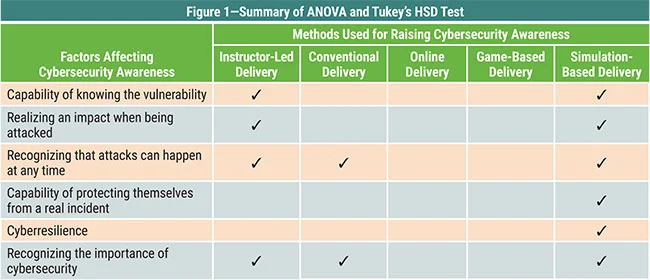What is Cybersecurity Awareness?
Cybersecurity awareness is the level of understanding and mindfulness that people in your organisation have of the various cybersecurity threats that they may face, and how they should best respond.
A shocking 82% of all data breaches involve some human element, such as social engineering or through plain old human error and misuse. What this tells us is that people – our staff, suppliers and partners – can not only be the weakest link in our cybersecurity posture, but also offer the greatest potential to help protect against cyberattack.
Cybersecurity awareness is the lever that we must use to shift our people from being our biggest cyber-risk to being our strongest line of defence.
Why is Cybersecurity Awareness important?
With the average cost of a data breach in Australia reaching $4.4 million, cybersecurity attacks pose a very real and present threat to organisations of all types. Cybersecurity frameworks such as the ACSC Essential Eight and the NIST CSF can help us with strategies and security controls to help mitigate these risks, but technical controls can only help so far.
With the statistics clearly showing that the human element plays a major role in the effectiveness of our defences, we ignore cybersecurity awareness at our peril.
How to build a culture of cybersecurity awareness
Intentionally building any culture takes time, commitment and consistency to create and reinforce the behaviours that we wish to see in our organisation. Building a culture of cybersecurity awareness is no different.
Here are five practical ways to engage your organisation and build the cyber-aware culture you need.
Secure leadership buy-in
Culture is lead from the top and cybersecurity awareness is no different. All organisations look to their leaders to set the direction for the company not only through explicit statements, but also through implicit and implied messaging. Leaders must be seen to embrace the importance of a cybersecurity aware culture, and to lead by example.
Securing leadership buy-in can be helped by:
- Taking a holistic view of the organisation, of which a cybersecure culture is merely one piece.
- Connecting a cyber-aware culture to the company’s strategy, goals and aspirations.
- Clearly communicating the business case for strong cybersecurity awareness.
Promote robust policies, procedures and best practices
Robust cybersecurity policies and procedures are at the heart of any cyber-secure organisation. Policies and procedures must walk the fine line between protecting the organisation and being overly restrictive on how staff may go about their work. Too lenient and they may be ineffective – too stringent and staff satisfaction and productivity may suffer.
Policies and procedures should be promoted regularly to keep them top of mind with staff, along with examples of best practice responses to various likely scenarios.
Some common ways of promoting cybersecurity policies and best practices can include:
- Ensure policies and procedures are clear, actionable and easily accessible to all staff.
- Download, print and share posters and resources promoting cybersecurity best practice.
- Communicate examples of real-world cybersecurity threats, and best practice responses through internal communications channels.
Conduct regular cybersecurity training
Regular cybersecurity training will not only keep cybersecurity top of mind and reinforce best-practice threat response, but it will provide an avenue for keeping staff updated on the latest cyber-threats they may face. The challenge of course is to keep training engaging and effective.
You might like to consider these Ideas for delivering engaging cybersecurity awareness training:
- Mix up the format of delivery between online, in-person and self-paced.
- Keep training sessions short, high energy and with a clear take-away message.
- Consider bringing in an external trainer to inject new ideas and energy.
Schedule simulated cyberattacks
Research has shown simulation-based cybersecurity awareness training to be the most effective when compared to other methods such as instructor led (a close second place) and online delivery. Simulations may be run periodically to quantify the level of cybersecurity awareness in the organisation and identify improvement over time.

Table courtesy of ISACA.orgIn practice, the most common form of simulated cyberattack is referred to as “Friendly Phishing”, whereby staff are sent a fake phishing email to see how they respond. Those who are successfully tricked by the fake phishing email are immediately shown the error of their ways and are offered a brief online training snippet to educate them on how they could have identified the threat in time, and what a more appropriate response would have been.
Be consistent and stay informed
When impacting any organisational change, it is important to be consistent both in the message and the delivery. Be clear up front what you want your cybersecurity culture to look like and ensure that all key stakeholders are aligned and have the tools available to drive the necessary change.
Organisational culture requires ongoing stewardship. It takes time to establish the culture that you want, and ongoing vigilance to keep it strong. Maintaining an effective culture of cybersecurity awareness is an ongoing process, not a once-off activity
Conclusion
Cybersecurity awareness presents both the biggest threat and the largest opportunity to your organisation’s cybersecurity posture. A poor level of awareness will leave you exposed to attack, regardless of what technical security measures you may have in place. A culture of high cybersecurity awareness on the other hand will be your strongest line of defence in protecting your company.






















